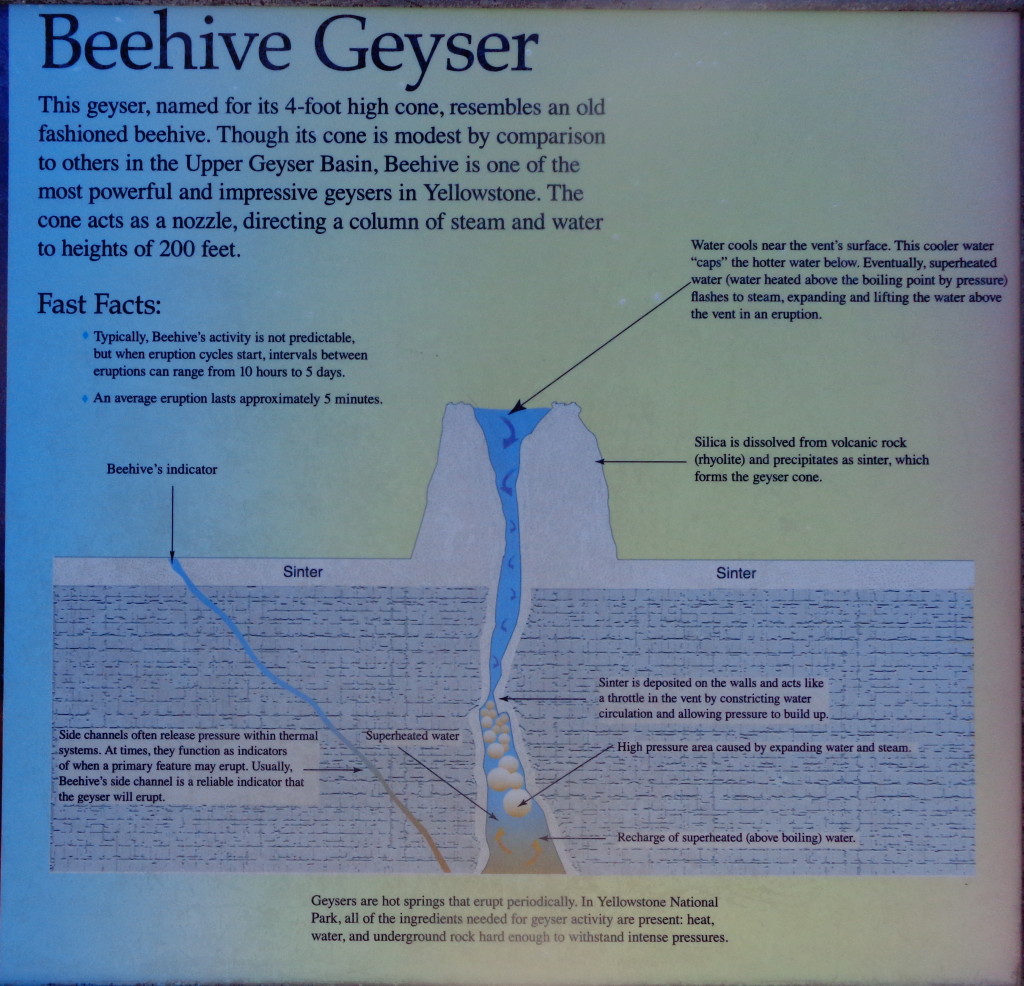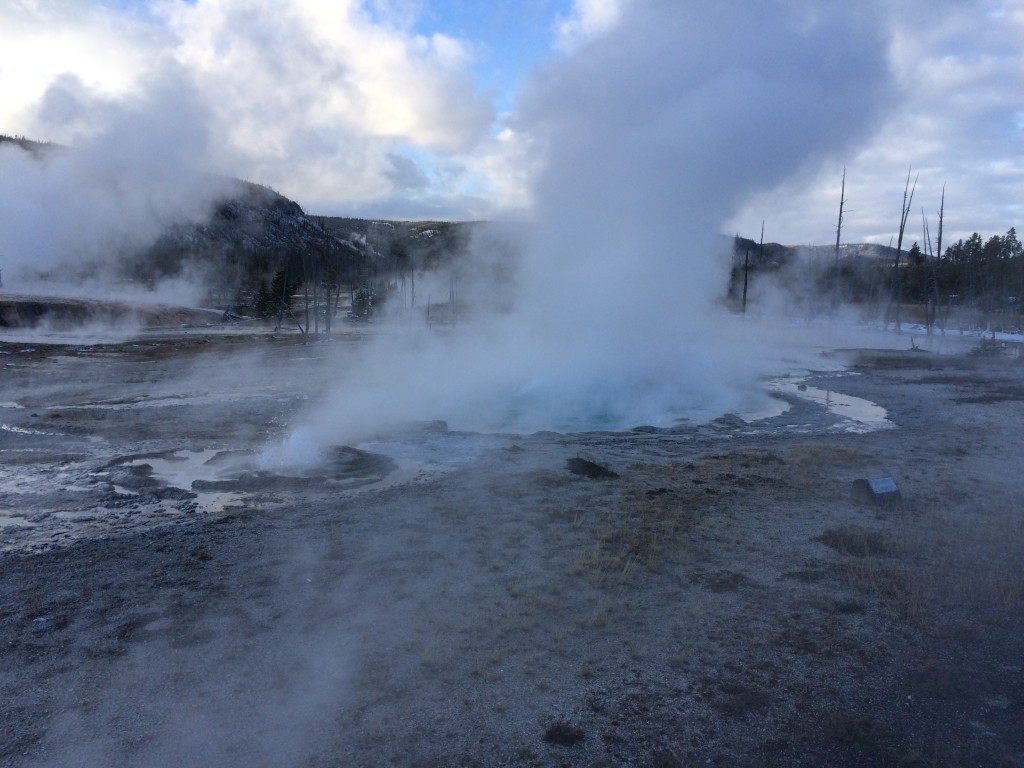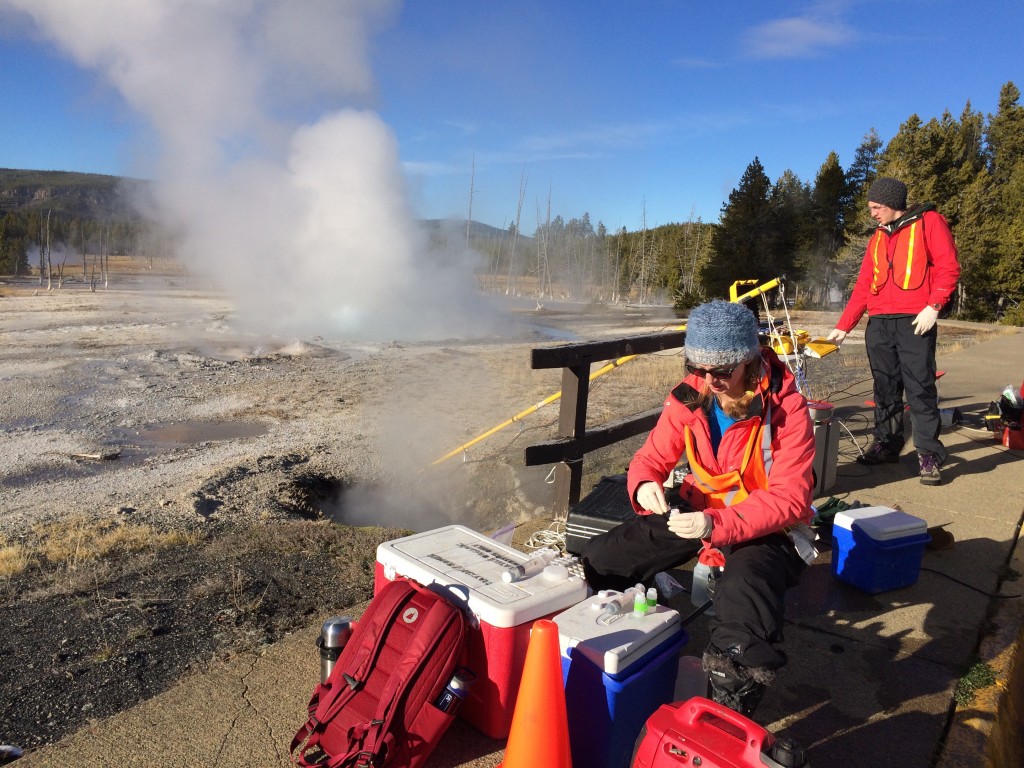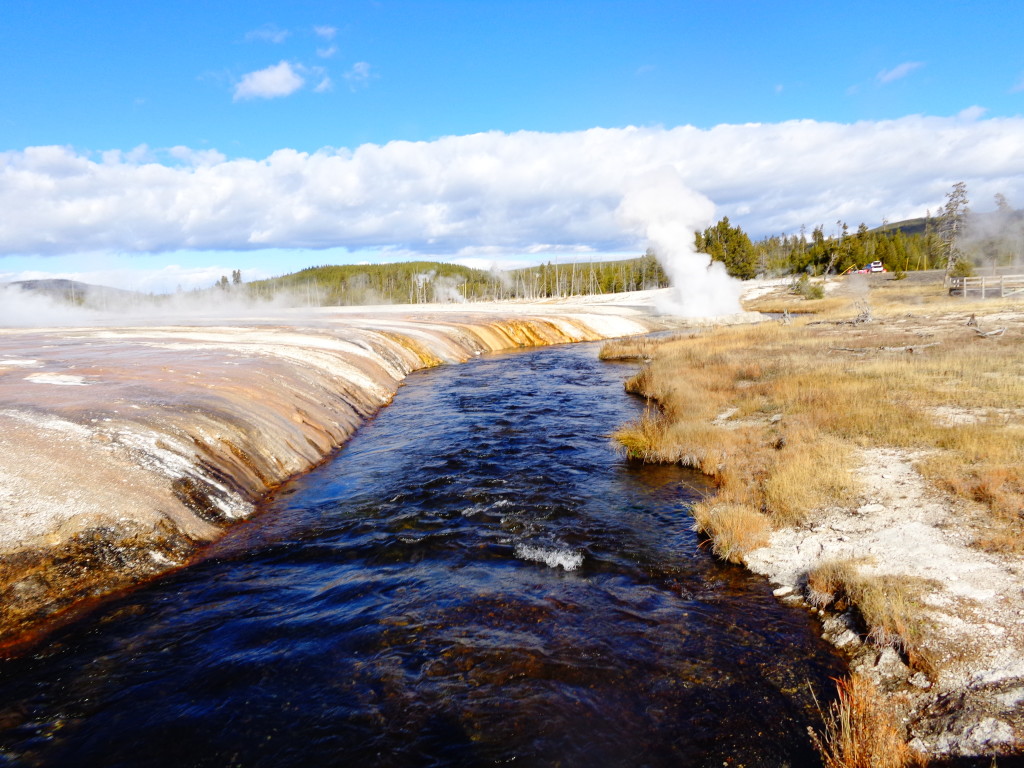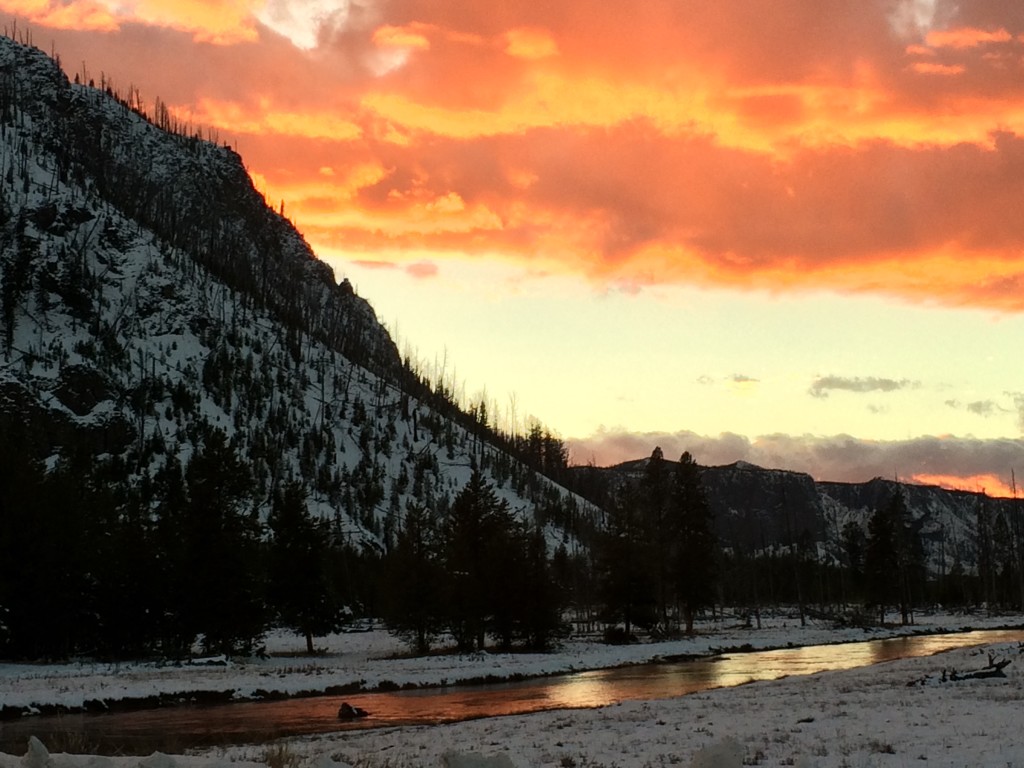Bethany Ladd was an MSc student working on the role dissolved gas pressure in geyser eruption with Dr. Cathy Ryan in Geoscience at the University of Calgary. They continue to work together unlocking the mysteries of dissolved groundwater gases with a number of applications.
In Yellowstone, a visitor curious about geysers might read a sign like this:
At the bottom, this sign reads : “In Yellowstone National Park, all of the ingredients needed for geyser activity are present: heat, water, and underground rock hard enough to withstand intense pressures.” It is a nice, packaged explanation, but does it tell the full story? After all, there are many examples of cold-water geysers throughout the world, which do not require heat, but are driven by other gases such as CO2. Is steam the only gas at play in Yellowstone geysers? Yellowstone National Park sits atop one of the largest volcanoes in the world, where magma only a few kilometers below the surface degasses CO2 and other magmatic gases, which dissolve into the groundwater (water that eventually feeds geysers). Our study focussed on the question of whether dissolved gases, aka non-water vapor, might be a controlling factor in hot-water geysers.
After reconnaissance of several geysers, we conducted a detailed study on Spouter Geyser, located in Black Sand Basin of Yellowstone National Park. This geyser has a cycle of about 2-4 hours, and eruptions can last from about 30 to 90 minutes.
We collected time-series samples of the near-surface geyser water to analyze for dissolved gases, major ions, and water isotopes. We also deployed in-situ probes to collect field parameters such as temperature, pH, and conductivity. Carbon dioxide was the only dissolved gas we found in the Spouter Geyser water samples. We found that dissolved CO2 concentrations demonstrated a cyclic pattern that corresponded to the geyser cycle, peaking directly before an eruption, and decreasing during eruptions. Using these concentrations along with the other field data collected, we estimated dissolved CO2 concentrations in the source water feeding Spouter Geyser. Interestingly, we found that water vapor pressure alone was not great enough to produce a gas phase in the source water, but the additional partial pressure contributed by dissolved CO2 was great enough to cause vapor saturation. Thus we concluded that dissolved CO2 is a necessary component to the geyser trigger in Spouter Geyser.
All work was conducted under a Scientific Research and Collection permit administered by the Yellowstone National Park staff, to whom we are extremely grateful for their guidance and help.
You can read more about this research in a recently published article in Geology.
![]() This work is licensed under a Creative Commons Attribution-NonCommercial-ShareAlike 4.0 International License.
This work is licensed under a Creative Commons Attribution-NonCommercial-ShareAlike 4.0 International License.

